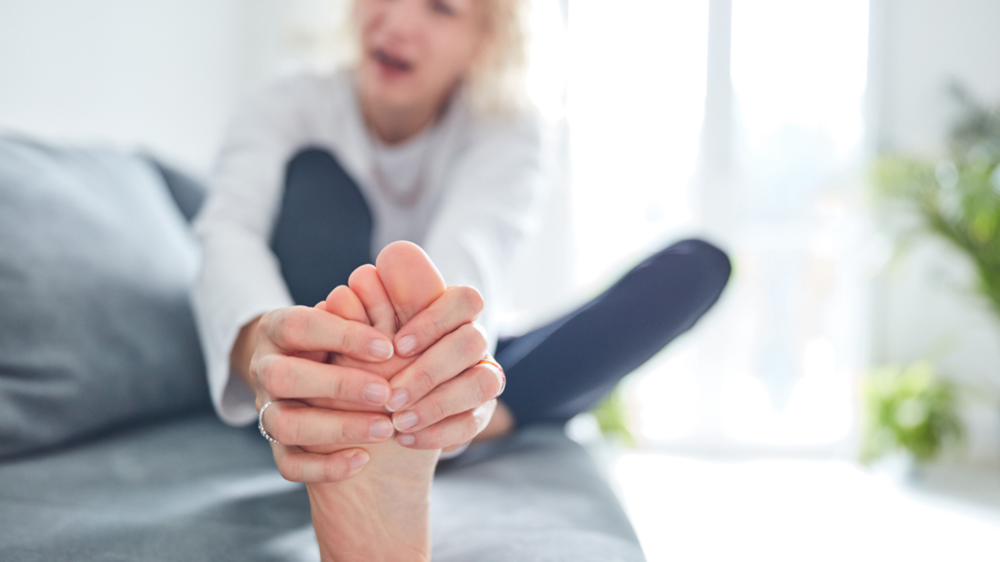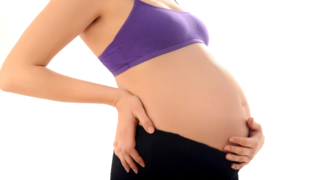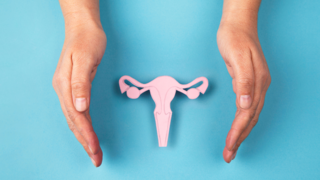In this article:
Even in early pregnancy, before your belly is obvious, things start to change. That’s because your body begins adapting from the inside out, softening ligaments, relaxing joints, and preparing for growth. By the third trimester, these changes can affect how you walk, stand, climb stairs, or even shift in bed. Understanding what’s happening helps you protect yourself without feeling anxious or overly restricted.
What Changes in Your Body Cause Balance Issues?
As pregnancy progresses, your biomechanics shift significantly.- Centre of gravity shifts forward: As the uterus grows, your weight distribution moves ahead of your feet. This shift subtly alters posture and gait.
- Loosening of ligaments: The hormone relaxin peaks in the first trimester and continues throughout pregnancy, softening ligaments and increasing joint laxity, especially in the pelvis, knees, and ankles.
- Wider stance and gait adaptations: To compensate for these changes, many pregnant people naturally widen their stance while walking, which may feel awkward or unstable.
- Delayed reflexes: Some research suggests that proprioception, your body’s sense of spatial awareness, may slightly decline due to fatigue, hormonal changes, and increased body mass.
- Core muscle shifts: As the abdominal muscles stretch and sometimes separate (diastasis recti), their ability to stabilise your spine and pelvis weakens.
How Balance Changes Affect Daily Life
You might not realise how much balance matters until it begins to shift. Here’s how these changes can impact your daily movement and comfort:- Increased risk of falls: Falls are the leading cause of injury in pregnant women, particularly in the second and third trimesters.
- Difficulty with stairs or uneven surfaces: What once felt routine (climbing stairs, crossing a street curb, or walking on gravel) might suddenly feel unsteady.
- Trouble getting up or lying down: Muscle shifts and reduced joint stability can make simple transitions feel more physically demanding.
- Foot pain and altered gait: Flattening arches, swelling, and altered foot mechanics due to pregnancy weight gain can lead to overpronation and imbalance.
- Fatigue affecting coordination: Physical tiredness and interrupted sleep can dull your reflexes and increase missteps, especially in late pregnancy.
What Increases the Risk of Losing Balance in Pregnancy?
While every pregnant body experiences changes, some conditions or situations increase the chance of tripping or falling.- Carrying twins or a larger baby: More weight means more postural shift and added pressure on joints and muscles.
- Pre-existing conditions like low muscle tone or flat feet: These amplify the destabilising effects of relaxin and weight gain.
- Varicose veins or oedema: These can interfere with mobility, joint stiffness, and sensory input from your legs and feet.
- Back or pelvic girdle pain: Instability in these regions makes maintaining posture harder and fatigue sets in faster.
- Wearing unsafe footwear: High heels, poorly cushioned sandals, or unsupportive flats can magnify the risk of imbalance.
- Poor lighting and slippery floors: Environmental hazards become more dangerous when combined with internal changes.
Is There a Way to Measure Balance Changes?
There’s no standard test during routine prenatal care, but research settings use balance platforms and gait analysis tools to measure postural sway and foot pressure distribution.If you’re experiencing frequent imbalance, your healthcare provider may recommend:
- Postural assessments by a physiotherapist to evaluate gait, hip alignment, and muscle strength
- Vestibular exams if dizziness or vertigo are also present
- Foot arch analysis to assess whether custom orthotics might help improve foot stability
How to Support Your Balance During Pregnancy
You don’t need to stop moving. You just need to move differently. Here’s how to stay steady and safe.- Wear supportive footwear: Look for low-heeled shoes with arch support, non-slip soles, and a wide toe box. Avoid anything that tips you forward or lacks grip.
- Strengthen your stabilisers: Gentle pelvic floor and core stability exercises like side-lying clams, glute bridges, or cat-cow stretches can improve spinal support.
- Use assistive props if needed: A handrail while climbing stairs, a pregnancy support belt in the second and third trimesters, or even anti-slip socks at home can provide reassurance.
- Prioritise good posture: Stand with feet shoulder-width apart, avoid locking your knees, and imagine a straight line from your ears to your ankles.
- Slow down transitions: When standing up or turning, take your time. Move mindfully, especially when getting out of bed or bending to pick something up.
- Avoid carrying heavy loads: Let others help with groceries, laundry, or anything above 10 kg. Uneven weight distribution, especially if held on one side, throws your balance off further.
FAQs on You Keep Tripping Over Your Own Feet: Pregnancy Balance Changes Are Real
- When do balance issues usually start in pregnancy?
Some changes begin as early as the first trimester due to hormonal shifts, but most people notice instability from the second trimester onwards. - Can I continue walking or exercising if I feel a bit unsteady?
Yes, but choose flat surfaces, wear supportive shoes, and reduce intensity. Avoid high-impact workouts or uneven terrain without guidance. - Should I avoid stairs during pregnancy?
Not necessarily, but take them slowly, use railings, and avoid carrying heavy items while climbing.






